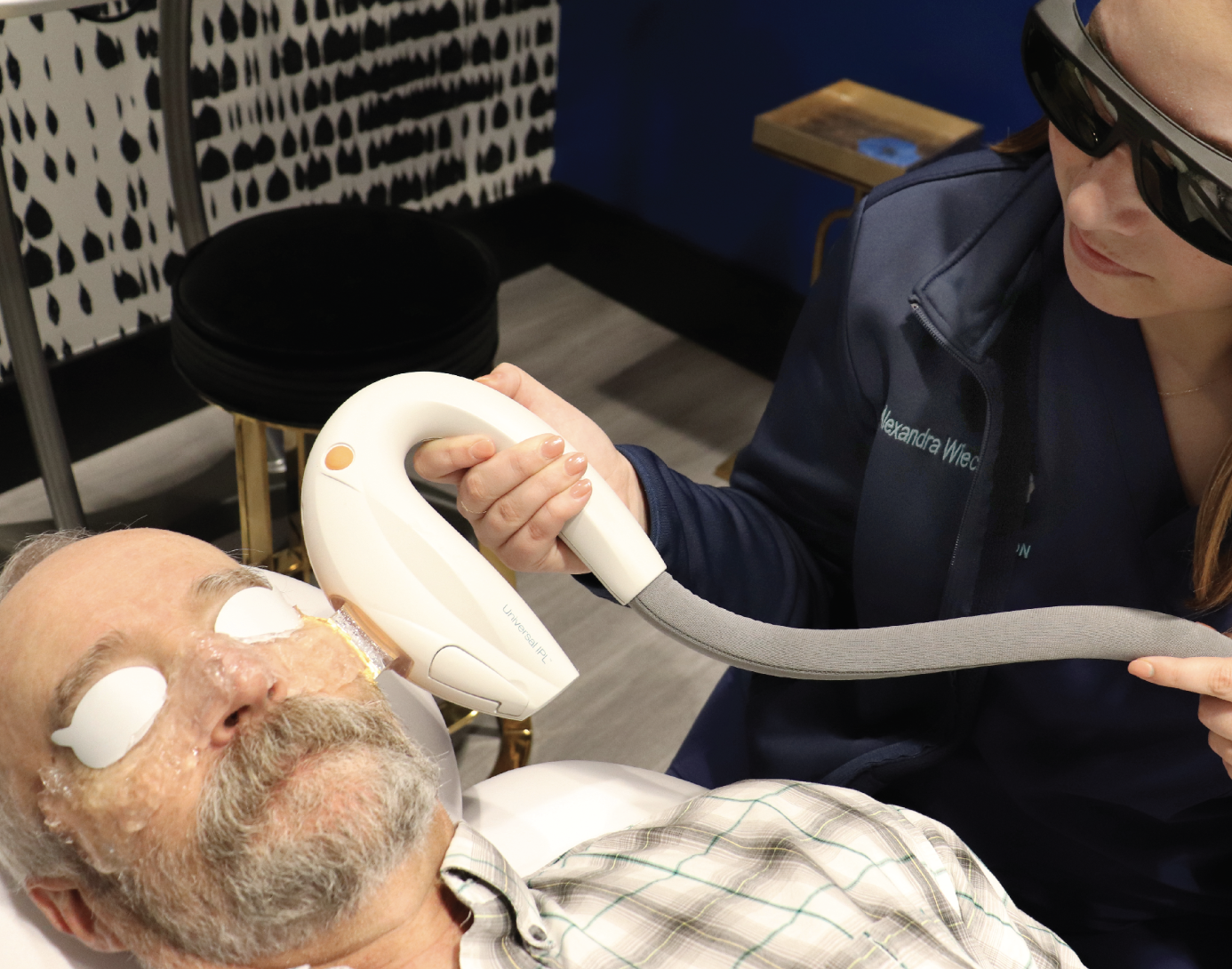 |  |
Eight years ago, the initial intense pulsed light (IPL) protocols were developed and an FDA study was done here at Dell Laser Consultants in Austin (Dr. Cunningham’s practice). Since then, we have seen several new devices enter this field and many minor alterations in protocols tested. The initial indications for treatment were based on rosacea—more specifically, meibomian gland dysfunction (MGD) from ocular rosacea. Since then, we have seen approval for management of dry eye disease due to MGD.
Although this may seem like a significant indication advancement, the last decade of research in this field has showed us that the majority of general dry eye patients are rosacea-related anyway.
Purpose and Platforms
IPL creates photothermolysis by emitting polychromatic light in millisecond pulse duration using wavelengths of 500nm to 1200nm. Basically, very short pulses of high-energy light are absorbed by photophores (pigment, water, blood vessels) leading to their destruction. By using short pulses of light, we can target these specific cells while causing almost no damage to the surrounding cells.
In MGD, the objective is to deliver energy targeting dermal vascular and pigmented lesions, minimizing vascular leakage of inflammatory mediators and ablate abnormal vessels.1 There may also be a photobiomodulation (PBM) effect from the IPL on local tissue and glands. Studies show that PBM can inhibit mast cell degranulation, upregulate antioxidant defenses, reduce reactive oxygen species in oxidative-stressed cells and reduce levels of pro-inflammatory cytokines in activated inflammatory cells.2
 |
| It’s important to understand IPL and know the differences between the devices offered. Photo: Alexandra Wiechmann, OD. Click image to enlarge. |
Here is a brief breakdown of the similarities between available platforms in the US:
Treatment area. All platforms continue to study treating the upper cheek area from canthus to canthus. Because of the need for eye protection, the actual treatment area is not directly over the meibomian glands. Using current approved protocols and devices, no significant meibomian gland heating has been shown.
Multiple treatments. All current platforms revolve around the initial four treatments separated by two to four weeks.
Differences between platforms include:
Energy. The light that is delivered over a short period of time can be manipulated in many ways. The “flash” of light that you perceive during an IPL is usually multiple pulses at certain energies and certain durations, separated by a specified amount of time to allow for thermal relaxation. For example, a shorter pulse duration will be more painful and absorb more superficially. A longer pulse length will be more gentle and drive energy deeper. The “flash” from the IPL may consist of anywhere from one to eight pulses. The fewer pulses and shorter pulse duration equate to more superficial and uncomfortable treatment. Each of these platforms will have fundamental differences in how they aim to achieve their therapeutic effect.
Cosmetics and pain. There is no doubt that a major driving factor behind the general appeal of IPL was the secondary cosmetic benefit of reducing freckles, age spots, telangiectasia or any irregularity in facial pigment. Although the initial platform for IPL eye treatment (Lumenis M22) was based on a cosmetic-based treatment, more recent IPL platforms have little to no cosmetic benefit. This has been done to decrease discomfort for the patient and may be better targeted at having energy reach the deeper meibomian glands, rather than superficial pigment.
The adoption of IPL in dry eye treatment has been a completely uncharted journey that has much more to be discovered with regards to efficacy and pathophysiology.
Dr. Cunningham is the director of optometry at Dell Laser Consultants in Austin, TX. He has no financial interests to disclose. Dr. Whitley is the director of professional relations and residency program supervisor at Virginia Eye Consultants in Norfolk, VA. He is a consultant for Alcon.
1. Liu R, Rong B, Tu P, et al. Analysis of cytokine levels in tears and clinical correlations after intense pulsed light treating meibomian gland dysfunction. Am J Ophthalmol. 2017;183:81-90. 2. Jiang P, Liu Y, Zhang J, et al. Mast cell stabilization: new mechanism underlying the therapeutic effect of intense pulsed light on rosacea. Inflamm Res. 2023;72(1):75-88. |

